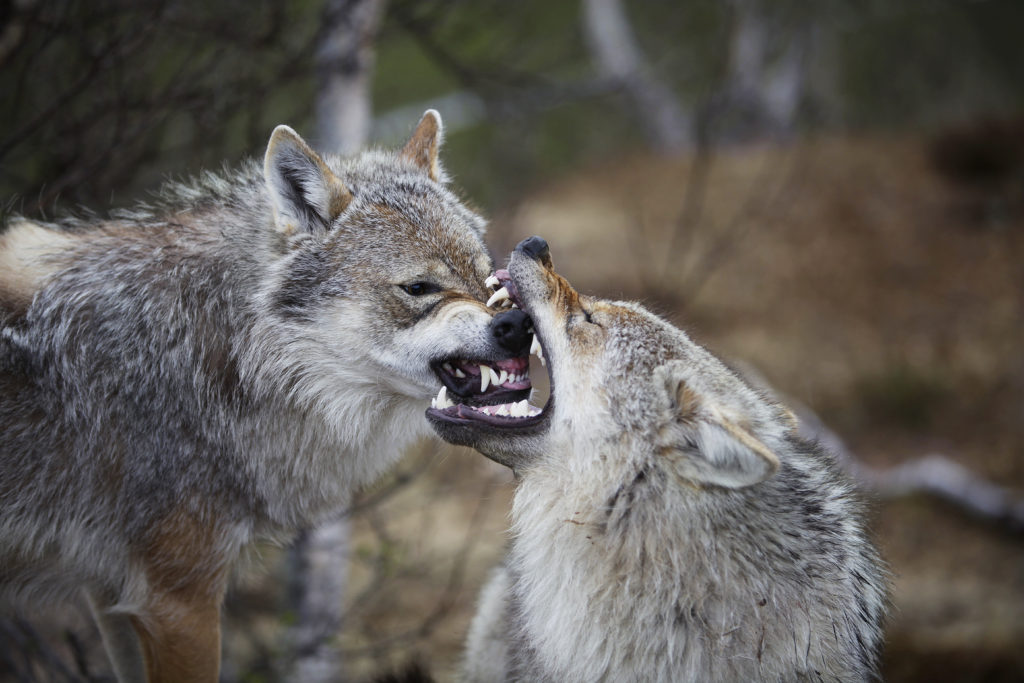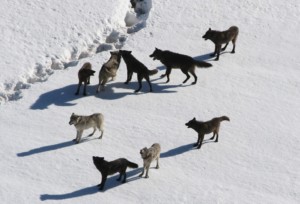
Wolves are fascinating creatures that have captured the attention of humans for centuries. They are social animals that live in packs and are found in many parts of the world, from the Arctic tundra to the forests of North America. But what do they eat, and what eats them? In this article, we will explore the diet of wolves and their predators.
What Do Wolves Eat?
Wolves are carnivores and are at the top of the food chain in most areas they inhabit. Their diet consists mainly of large ungulates, such as deer, elk, and moose. However, they also consume smaller prey such as beavers, rabbits, and rodents. In areas where large ungulates are scarce, wolves may also eat birds, fish, and carrion.
Grey Wolves Grey wolves are the most common type of wolf and are found in many parts of the world, including North America, Europe, and Asia. They are also known as timber wolves or western wolves. Grey wolves are opportunistic predators and will eat whatever prey is available. They are known to hunt elk, deer, bison, and other large ungulates.
Red Wolves Red wolves are a species of wolf that is native to the southeastern United States. They are critically endangered and their diet is mostly made up of small mammals like rabbits, rodents, and raccoons. However, they will also hunt larger prey like deer when available.
Arctic Wolves Arctic wolves are found in the Arctic regions of North America and Greenland. They have adapted to the harsh conditions of the tundra and have a diet that consists mainly of muskoxen, caribou, and Arctic hares. They will also scavenge on the carcasses of other animals.
What Eats Wolves?
Despite being at the top of the food chain, wolves do have predators. In North America, wolves are mainly hunted by humans. However, in other parts of the world, wolves may also be preyed upon by other carnivores, such as bears, cougars, and wolverines.
Human hunting of wolves is a controversial topic and has led to many conservation efforts to protect these animals. In some areas, wolves have been reintroduced to their natural habitat, and conservationists work to educate people on the importance of preserving their ecosystems.
How Do Wolves Hunt?
Wolves are pack hunters, and their hunting strategy varies depending on the size and agility of their prey. For larger prey like elk or moose, wolves work together to chase and exhaust the animal until it is too tired to continue. They will then go for the throat to bring it down.
For smaller prey, like rabbits or rodents, wolves will use their sense of smell and hearing to locate their prey. They will then work together to chase it down and catch it.
In conclusion, wolves are apex predators and play an important role in their ecosystems. Their diet consists mainly of large ungulates, but they are also opportunistic and will eat smaller prey and carrion. Grey wolves are the most common type of wolf and will eat whatever prey is available. Red wolves are critically endangered and mainly eat small mammals. Arctic wolves have adapted to the harsh conditions of the tundra and have a diet that consists mainly of muskoxen, caribou, and Arctic hares. Despite being at the top of the food chain, wolves have predators like humans and other carnivores. Wolves are pack hunters and use different hunting strategies depending on their prey.
Leave a Reply